Pathogenicity and peramivir efficacy in immunocompromised murine models of influenza B virus infection
- PMID: 28779075
- PMCID: PMC5544712
- DOI: 10.1038/s41598-017-07433-z
Pathogenicity and peramivir efficacy in immunocompromised murine models of influenza B virus infection
Abstract
Influenza B viruses are important human pathogens that remain inadequately studied, largely because available animal models are poorly defined. Here, we developed an immunocompromised murine models for influenza B virus infection, which we subsequently used to study pathogenicity and to examine antiviral efficacy of the neuraminidase inhibitor peramivir. We studied three influenza B viruses that represent both the Yamagata (B/Massachusetts/2/2012 and B/Phuket/3073/2013) and Victoria (B/Brisbane/60/2008, BR/08) lineages. BR/08 was the most pathogenic in genetically modified immunocompromised mice [BALB scid and non-obese diabetic (NOD) scid strains] causing lethal infection without prior adaptation. The immunocompromised mice demonstrated prolonged virus shedding with modest induction of immune responses compared to BALB/c. Rather than severe virus burden, BR/08 virus-associated disease severity correlated with extensive virus spread and severe pulmonary pathology, stronger and persistent natural killer cell responses, and the extended induction of pro-inflammatory cytokines and chemokines. In contrast to a single-dose treatment (75 mg/kg/day), repeated doses of peramivir rescued BALB scid mice from lethal challenge with BR/08, but did not result in complete virus clearance. In summary, we have established immunocompromised murine models for influenza B virus infection that will facilitate evaluations of the efficacy of currently available and investigational anti-influenza drugs.
Conflict of interest statement
The authors declare that they have no competing interests.
Figures
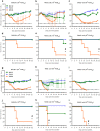

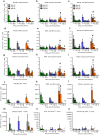
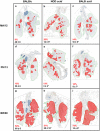
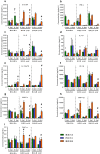
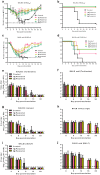
Similar articles
-
A pharmacologically immunosuppressed mouse model for assessing influenza B virus pathogenicity and oseltamivir treatment.Antiviral Res. 2017 Dec;148:20-31. doi: 10.1016/j.antiviral.2017.10.021. Epub 2017 Oct 31. Antiviral Res. 2017. PMID: 29100887 Free PMC article.
-
Optimizing T-705 (favipiravir) treatment of severe influenza B virus infection in the immunocompromised mouse model.J Antimicrob Chemother. 2019 May 1;74(5):1333-1341. doi: 10.1093/jac/dky560. J Antimicrob Chemother. 2019. PMID: 30715325 Free PMC article.
-
The effect of intravenous peramivir, compared with oral oseltamivir, on the outcome of post-influenza pneumococcal pneumonia in mice.Antivir Ther. 2015;20(1):11-9. doi: 10.3851/IMP2744. Epub 2014 Feb 12. Antivir Ther. 2015. PMID: 24517996
-
[Peramivir. A new and potent neuraminidase inhibitor for the treatment of influenza].Rev Esp Quimioter. 2006 Dec;19(4):317-22. Rev Esp Quimioter. 2006. PMID: 17235399 Review. Spanish. No abstract available.
-
Neuraminidase inhibitor resistance in influenza viruses.J Med Virol. 2007 Oct;79(10):1577-86. doi: 10.1002/jmv.20951. J Med Virol. 2007. PMID: 17705169 Review.
Cited by
-
Influenza B viruses from different genetic backgrounds are variably impaired by neuraminidase inhibitor resistance-associated substitutions.Antiviral Res. 2020 Jan;173:104669. doi: 10.1016/j.antiviral.2019.104669. Epub 2019 Nov 29. Antiviral Res. 2020. PMID: 31790712 Free PMC article.
-
Peramivir: A Review in Uncomplicated Influenza.Drugs. 2018 Sep;78(13):1363-1370. doi: 10.1007/s40265-018-0981-8. Drugs. 2018. PMID: 30196350 Review.
-
Monoclonal Antibody Therapy Protects Pharmacologically Immunosuppressed Mice from Lethal Infection with Influenza B Virus.Antimicrob Agents Chemother. 2020 Aug 20;64(9):e00284-20. doi: 10.1128/AAC.00284-20. Print 2020 Aug 20. Antimicrob Agents Chemother. 2020. PMID: 32631823 Free PMC article.
-
Resistance profiles for the investigational neuraminidase inhibitor AV5080 in influenza A and B viruses.Antiviral Res. 2023 Sep;217:105701. doi: 10.1016/j.antiviral.2023.105701. Epub 2023 Aug 9. Antiviral Res. 2023. PMID: 37567255 Free PMC article.
-
PROTAC targeting cyclophilin A controls virus-induced cytokine storm.iScience. 2023 Aug 3;26(9):107535. doi: 10.1016/j.isci.2023.107535. eCollection 2023 Sep 15. iScience. 2023. PMID: 37636080 Free PMC article.
References
-
- Kim YJ, Boeckh M, Englund JA. Community respiratory virus infections in immunocompromised patients: hematopoietic stem cell and solid organ transplant recipients, and individuals with human immunodeficiency virus infection. Semin Respir Crit Care Med. 2007;28:222–242. doi: 10.1055/s-2007-976494. - DOI - PubMed
Publication types
MeSH terms
Substances
Grants and funding
LinkOut - more resources
Full Text Sources
Other Literature Sources

